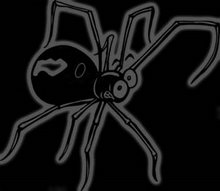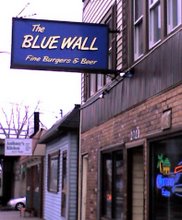 Tom had a ruptured aortic aneurysm which caused severe pain; massive internal hemorrhage; and, without the prompt treatment, normally results in a quick death. They replaced a large portion of his aorta with tubing. This medical condition called abdominal aortic aneurysm (AAA) is something of a stealth disorder. Patients usually have no symptoms. Neither its cause nor how to prevent it is known. More than 200,000 new AAA cases are diagnosed every year in the United States.
Tom had a ruptured aortic aneurysm which caused severe pain; massive internal hemorrhage; and, without the prompt treatment, normally results in a quick death. They replaced a large portion of his aorta with tubing. This medical condition called abdominal aortic aneurysm (AAA) is something of a stealth disorder. Patients usually have no symptoms. Neither its cause nor how to prevent it is known. More than 200,000 new AAA cases are diagnosed every year in the United States. Tommy was lucky - ruptured aneurysms have a mortality rate of greater than 50% (for those patients that even make it alive to the hospital). If an aneurysm grows and ruptures, it’s fatal in 90% of the cases. Since many patients with ruptured aneurysms die before receiving any medical care. Ruptured aortic aneurysms rank as the 13th or 14th most common cause of death, similar to the death rates from emphysema, renal failure or homicide.
 Along with his aorta repair, he also had a heart valve replaced with what they call a St. Jude Valve. The St. Jude heart valve was the first bileaflet mechanical heart valve (St. Jude Medical® (SJM)). This valve has a track record spanning 3 decades of excellent results. A
Along with his aorta repair, he also had a heart valve replaced with what they call a St. Jude Valve. The St. Jude heart valve was the first bileaflet mechanical heart valve (St. Jude Medical® (SJM)). This valve has a track record spanning 3 decades of excellent results. A  mechanical valve is carefully designed to mimic the native heart valve. It has a ring, like your own natural heart valve, to support the leaflets. Like your own heart valve, the mechanical valve opens and closes with each heartbeat, permitting proper blood flow through the heart. If you listen closely, it sounds like the ticking of a wristwatch.
mechanical valve is carefully designed to mimic the native heart valve. It has a ring, like your own natural heart valve, to support the leaflets. Like your own heart valve, the mechanical valve opens and closes with each heartbeat, permitting proper blood flow through the heart. If you listen closely, it sounds like the ticking of a wristwatch.To prevent any blood clots from developing on the valve, which can cause complications, a mechanical valve replacement requires you to take anticoagulation medicine (blood thinners) daily.






